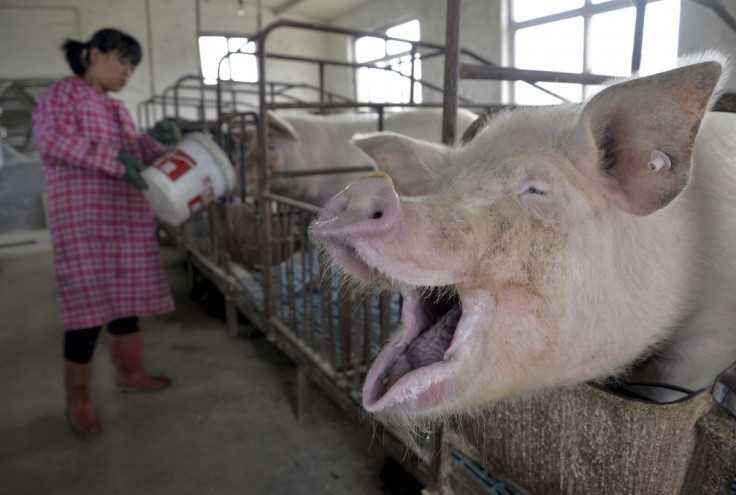Swine flu: New H1N1 virus in Chinese pigs has potential to cause global pandemic

A new strain of the H1N1 swine flu virus with the potential to "transmit efficiently in humans" and cause a pandemic has been discovered in China. Scientists isolated 139 H1N1 swine flu viruses in pigs in China and found they formed two groups distinct from the current human H1N1 virus.
The international team of researchers warned "immediate action" was required to prevent the transmission of this latest strain to humans. The findings, published in the journal PNAS, notes how the biological properties of swine flues are largely unknown.
Pigs are important hosts of the flu virus. The Eurasian avian-like H1N1 (EAH1N1) swine flu virus has circulated since the late 1970s and in 2009, a strain of it caused a global pandemic that killed over 18,000 people. Analysis of this pandemic showed the virus had originated from animal influenza viruses and was not related to the human seasonal H1N1 viruses that have been in general circulation since 1977.
In the latest study, the team carried out an extensive surveillance of pigs in China, isolating 228 viruses from over 36,000 animals. From this, they found 139 of the strains from 10 provinces across China belong to the H1N1 strain. Within this, there were five genotypes with two distinct antigenic groups, both of which are distinct from the current human H1N1 viruses.
Furthermore, the researchers found the new strain "preferentially bound to human-type receptors" and that nine of 10 transmitted in ferrets through respiratory droplets. Analysis also showed no humans had antibodies that could neutralise the virus.
"Although the EAH1N1 viruses do not cause severe disease in pigs and have different replication and virulence phenotypes in animal models, they may be able to replicate well and possibly cause appreciable disease in humans, as observed during the 2009/H1N1 influenza pandemic," they wrote.
"We found that the EAH1N1 swine flus got the highest risk score among six different subtypes of viruses, suggesting that the EAH1N1 SIVs may pose the highest pandemic threat among the influenza viruses currently circulating in animals.
"Our study shows the potential of EAH1N1 SIVs to transmit efficiently in humans and suggests that immediate action is needed to prevent the efficient transmission of EAH1N1 SIVs to humans."
© Copyright IBTimes 2025. All rights reserved.






















